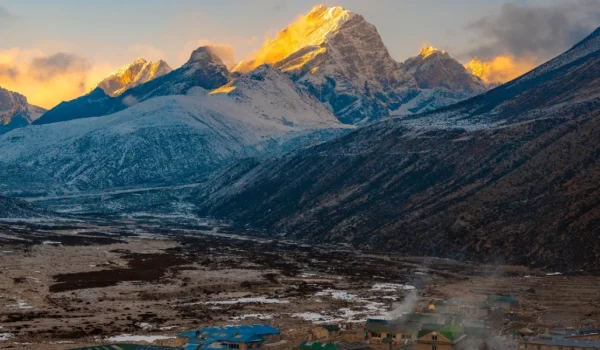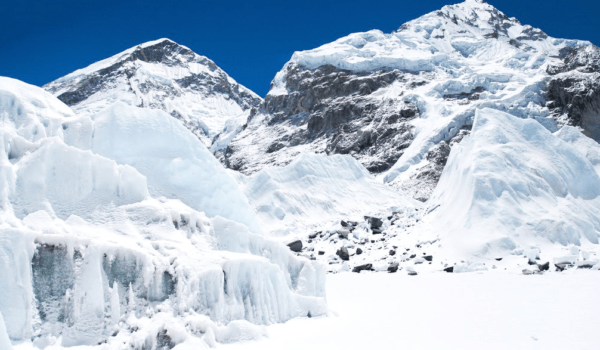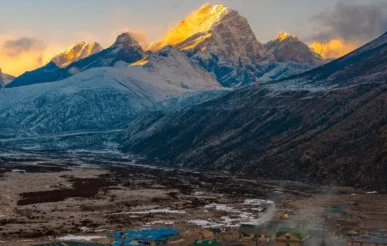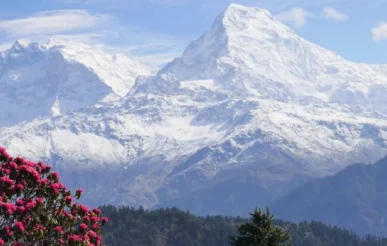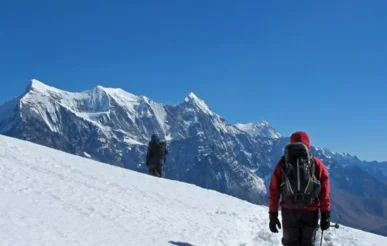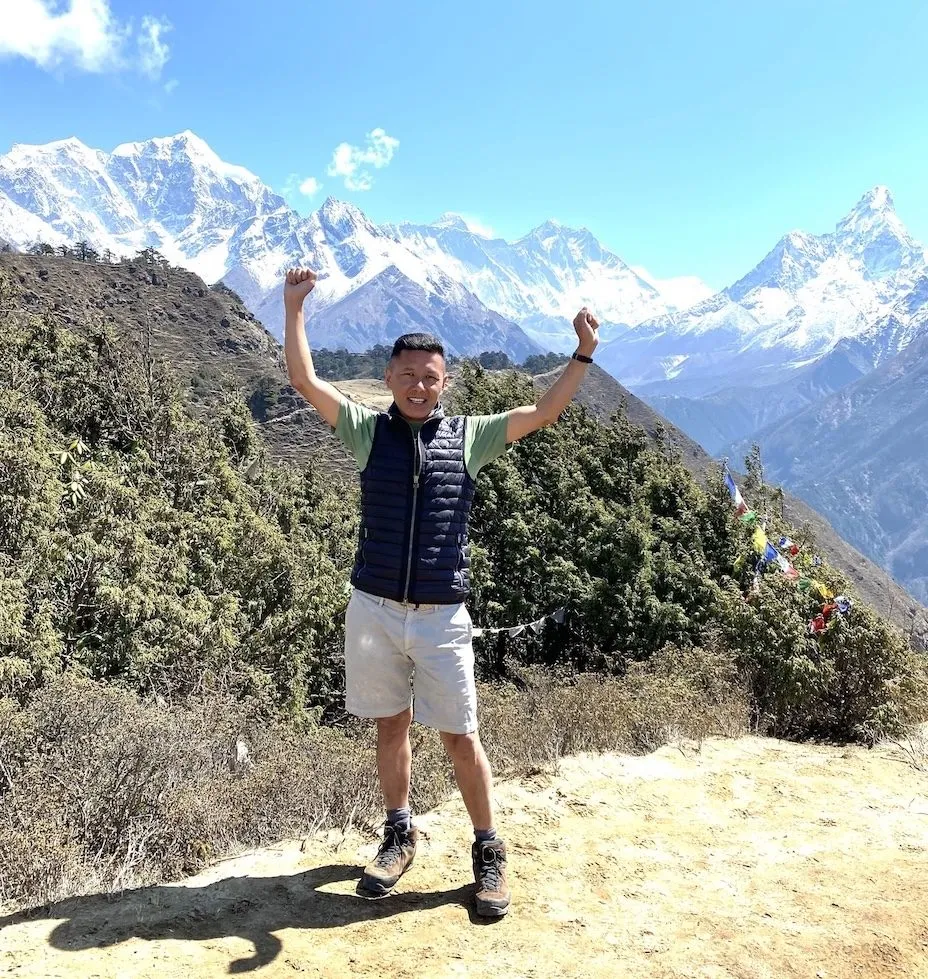Pikey Peak Trek Cost
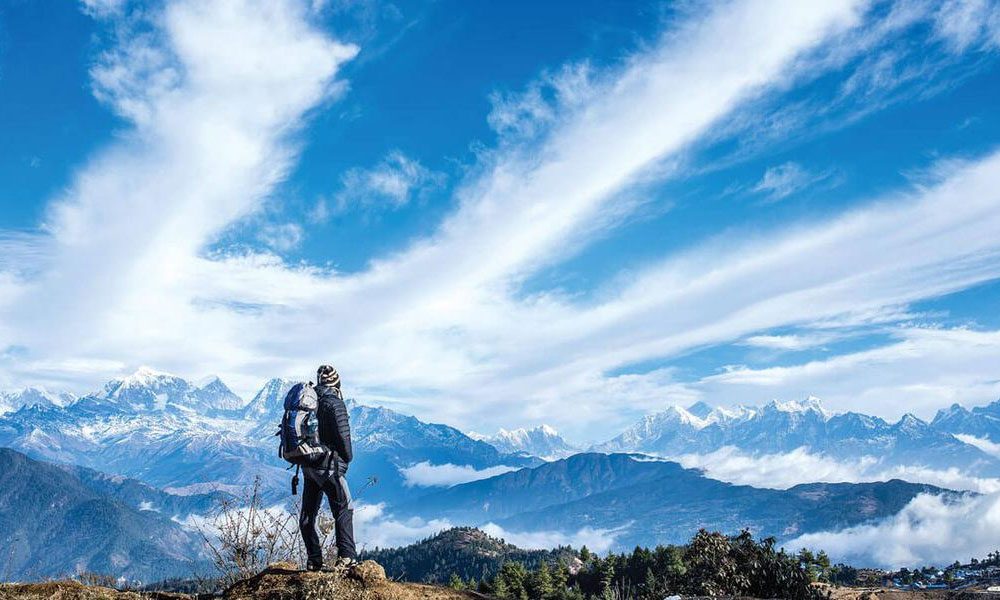
If you are willing to take in the paranormal views of mountains, mainly Mount Everest, the Pikey Peak trek is the one to consider. It is located at a height of 4065 meters in Nepal’s Solu Khumbu region. Many consider Pikey Peak to have one of Nepal’s top vantage points for viewing Mount Everest. That’s a bold claim, but Sir Edmund Hillary said it was his favorite, and we tend to believe him.
The Pikey Peak Trek Cost is not fixed, as the 9-day journey can range between USD 650 and USD 850 per person, depending on the season and itinerary. The price of this trek is entirely up to you, including the routes you choose, the travel agency you use, and, most importantly, how much you are willing to spend.
If you decide to trek with us, a local travel agency based in Kathmandu, it will cost you USD 775 per person for nine days. However, the trip could cost you more than USD 1,000 per person if you choose to go on a trek with a foreign travel agency.
Depending on the type of experience you want from the Pikey Peak Trek, your budget will vary. For luxury trekking with additional expenses on accommodation and transportation, expect the Pikey Peak trek to cost around USD 1000–USD 2000 for a single person. Likewise, Magical Summits offers the most affordable package, which costs just USD 775 per person. It covers things like permits, lodging, jeep or private vehicle rides, food, guide and porter services, etc. However, the cost does not include personal expenses, visa fees, travel insurance, or tips for a guide.
The trek can be completed in 9 days or less, depending on the trekker’s interest and itinerary. The Pikey Peak Trek’s overall cost, however, is not set in stone and may change depending on the needs of the traveler. As a result, it is impossible to come to a firm conclusion about how much this challenging trek in the Lower Khumbu region will cost right away. This article aims to give a thorough breakdown of the expenses and practical advice for the Pikey Peak trek. Continue reading to get all the details, then set your budget accordingly.
Read also:
Transportation Cost
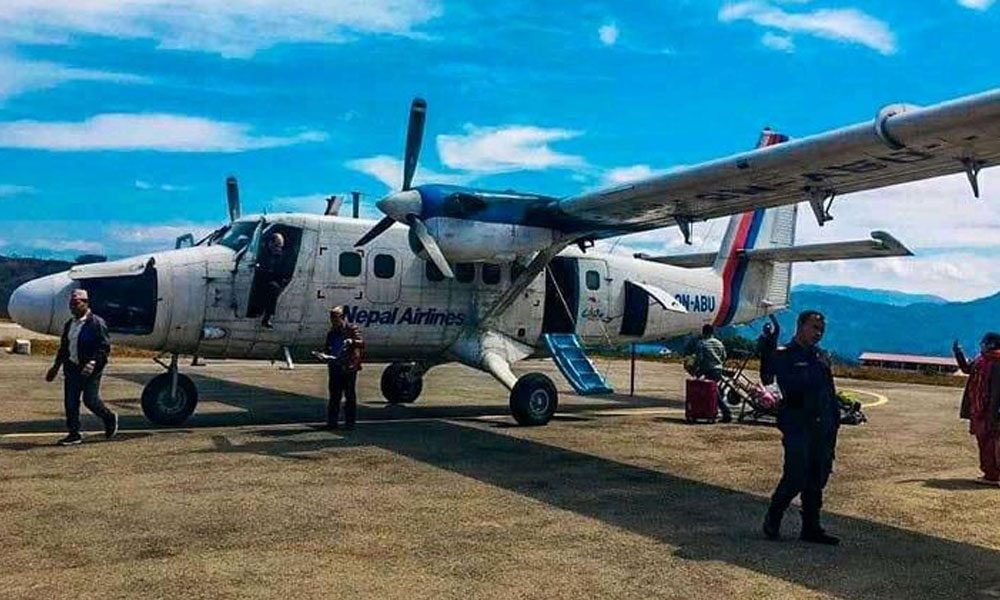
The first thing that every traveler needs to know is how to get to their hotel once they land at Tribhuvan International Airport. Pikey Peak Trek Costs do include your transport fees. A reputable travel agency will handle all of your transportation expenses if you choose the Pikey Peak Trek package with them. However, you must take a local taxi or bus to your hotel if you have not reserved a package.
From Tribhuvan International Airport, the main destination of every traveler is Thamel, which is at a distance of 5 kilometers from there. Taxi fare from the airport to Thamel is a convenient option. There is also a less convenient and cheaper option available via local buses. It will take you 60 minutes to reach a 20-minute destination at a much lower price. Nowadays, motorcycle rides are also available. Below are the various fares to travel to Thamel from the airport:
- Taxi fare: NRS 500 to NRS 700
- Bus fare: NRS 20 to NRS 30
- Motorcycle fare: NRS 120 to NRS 150
Your first stop on the way to Pikey Peak from the valley is Dhap Bazaar. There are various means of transportation you can take to reach your destination.
- Private Jeep drive (7 hours): approximately USD 300
- Shared Jeep ride (10 hours): approximately USD 20
- Public Transportation (12 hours): approximately USD 10
The road trip continues to Ghurmi, following the majestic Sunkoshi River. Along the way, you can see typical Nepalese homes, forests, rivers, and terraced fields. And the most comfortable means of transportation for this ride is via Jeep.
After your trek competition on the 9th day, you will return to Kathmandu from Phaplu. Here, too, you get to choose between a private drive, a shared vehicle, public transport, or you can even catch a plane.
- Private Jeep drive (7 hours): approximately USD 300
- Shared Jeep ride (10 hours): approximately USD 25
- Public Transportation (12 hours): approximately USD 20
- Airplane ( 38 minutes): approximately USD 200
Therefore, allocate at least USD 200–USD 800 for transportation within your Pikey Peak Trek budget.
Permit and Insurance Cost
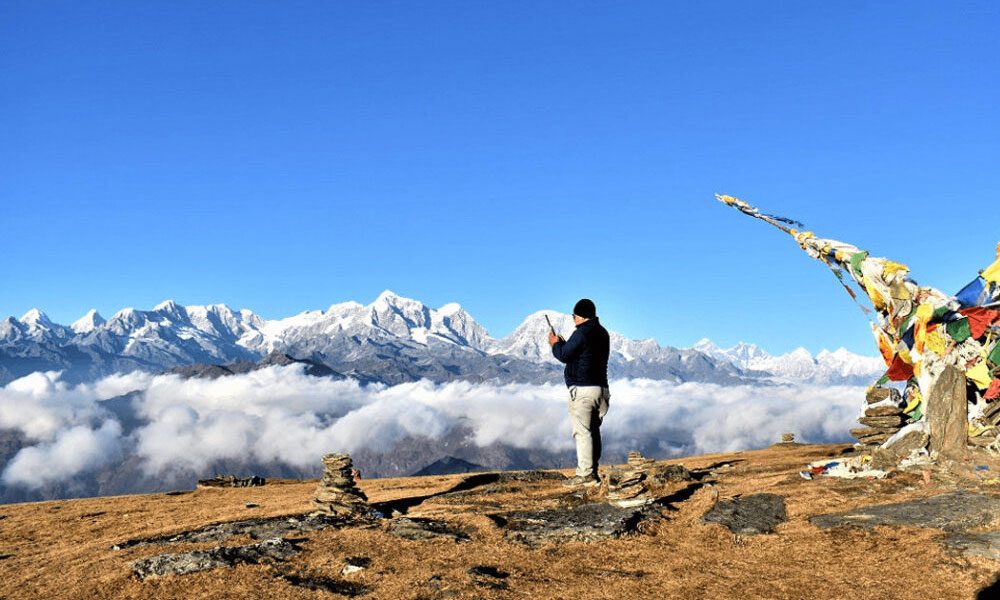
Permit
When calculating the Pikey Peak Trek Cost, permit fees must be taken into account. Pikey Peak is considered one of the permit-free trekking destinations in Nepal, but that’s not entirely true. You still need the following permits for the Pikey Peak Trek:
- Sagarmatha National Park entry permit: NPR 3,000 (around USD 30 ) per person
- Gaurishankar Conservation Area Permit (GCAP): NPR 3,000 (about USD 30) per person
- Local Area Permit: NPR 2,000 (around USD 17) per person
Normally, in the list of permits for treks in Nepal, the Trekkers’ Information Management System card (TIMS) is always included. But for Pikey Peak Trek, it is not required because the Solukhumbu region has started issuing permits since 2017.
Insurance
Travel insurance is a type of coverage created to safeguard your finances and offer support when unforeseen circumstances arise while you are traveling. Pikey Peak is not an easy trek and comes with many difficulties. When trekking through the Himalayan mountains, safety is vital because there is a chance of getting hurt. In light of this, it is crucial to buy travel insurance before leaving. Most of the packages for the trip, including ours, don’t include travel insurance.
Travel Insurance should cover altitude sickness, accidents, other illnesses, and theft. It is best to be prepared for any circumstances that may arise. It costs between USD 30 and USD 150, depending on the distance traveled.
Accommodation and Food costs
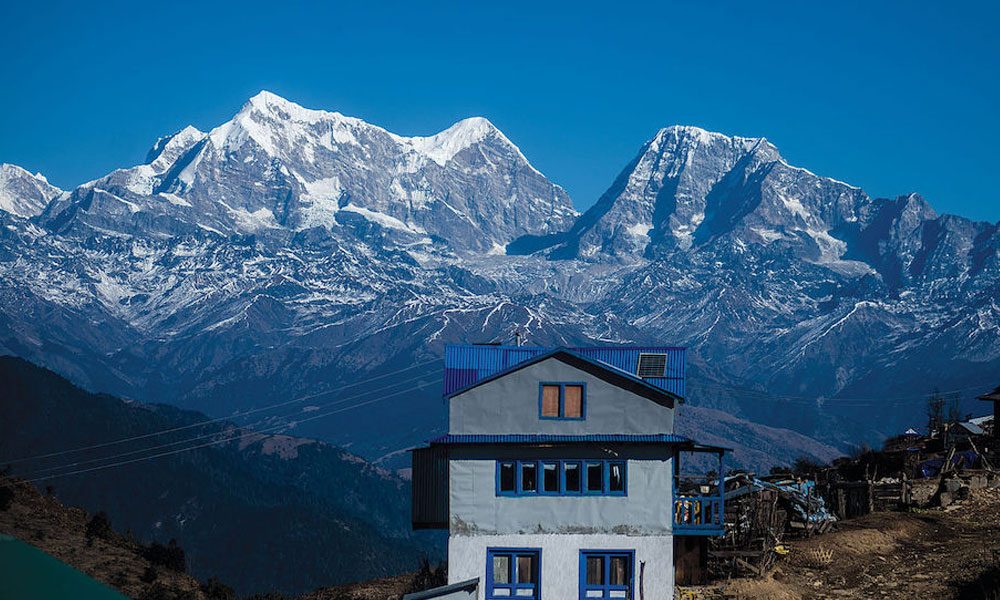
Pikey Peak Trek boasts many teahouses. Every stop along the trail has a teahouse or lodge where you can spend the night. Do not expect facilitated tea houses. Although the services in the tea houses will be excellent, they will be very simple. The majority of tea houses offer twin-sharing accommodations.
A shared twin room only costs USD 5 to USD 10 per person per night. However, if you prefer a more private room, the cost might go over USD 20 per night. Keep in mind that if you go hiking during the busiest times of the year, such as spring or fall, the costs may be higher and you might have to share a room. All things considered, a single person should budget between USD 45 and USD 90 for accommodation only.
Another amazing budget-friendly lodging option is homestays. The best part about staying at a homestay is that it is less expensive than staying in lodges or tea houses. Besides, you do not have to be concerned about costs and can enjoy many Nepali cuisines such as Dhindo, Dal Bhaat, and so on at very affordable prices.
The Pikey Peak Trek offers flexibility for all of the meals. You have a choice between continuing your trek for a few hours and stopping at one of the teahouses for lunch or continuing to your final destination and eating there. The decision is yours because you will be responsible for paying for every meal during this trek. But keep in mind that the cost of your meals will vary depending on where you decide to eat. If you dine in one of the tea houses in the Lower Region, you can anticipate paying USD 3–5 per dish.
There are many food options at the start of the trek, but as we climb higher, the options become fewer. Dal Bhat and potatoes are the main food items available in this region. But at lower altitudes, other food items like pizza, lasagna, and steak are also available. On average, with meals at a tea house three times a day, it will cost up to USD 200 for entire trek.
Guides and Porter costs
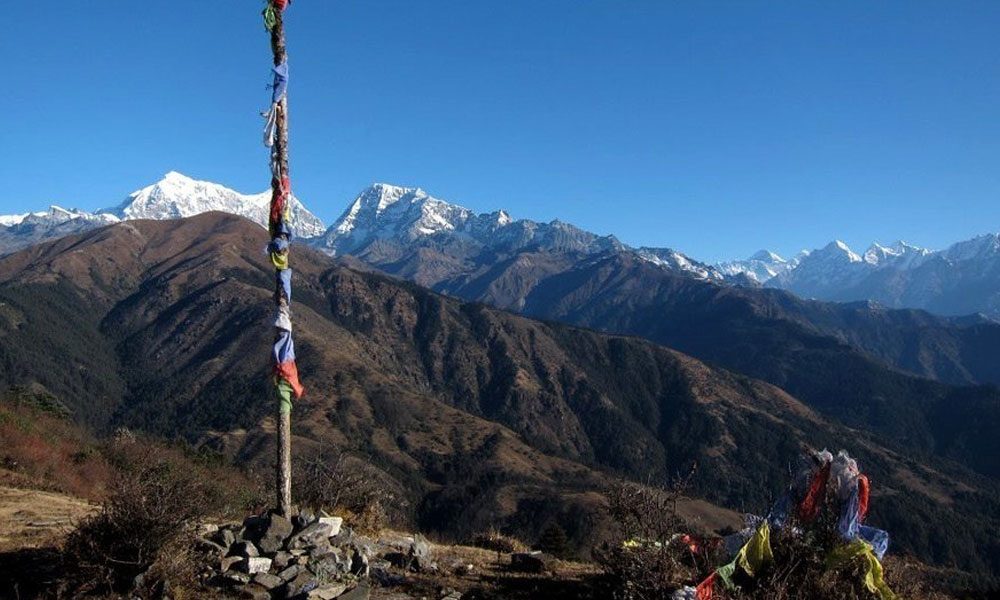
If you want to go on a solo expedition or trek in Nepal, you cannot because a new law prohibits solo travel and requires a guide for any trekking or expedition. So you must book a guide, but hiring a porter for the Pikey Peak trek is entirely up to you. You do not need to hire a porter if you can carry all of your belongings throughout the trek, but if you can’t, hiring porter services is a better option.
It is always a good idea to hire a porter and guide, especially for the Pikey Peak Trek.
You should hire them if you want to discover more about the Lower Khumbu region, culture, and tradition. They can also be your indispensable companion, helping you carry your belongings, find your way around, book reservations at teahouses, etc. You should budget between USD 25 and USD 35 per day, excluding tips, to hire their services.
Supplies and necessities costs
Another cost to factor into your budget is fresh drinking water. Although the water stream coming down from the mountain may seem clean and fresh, you should not directly drink from these open water streams. Instead, use purifying tablets, drops, or a portable water filter. If you prefer bottled water to those open streams, a single bottle of mineral water will cost you between USD 2 and USD 5 in the lower regions and more than USD 5 in the higher regions. Clean drinking water will cost up to USD 40 for nine days.
You might also need to sort out gear and equipment that you may need for the Trek. Since you must hike continuously for 3-6 hours every day on snowy mountain trails, hiking boots are the most essential piece of equipment you need.
You do not need specialized equipment for the Pikey Peak Trek. However, the following are the basic supplies recommended:
- Hiking Boots
- A windproof Jacket
- Long-sleeve shirts
- Socks
- Gloves
- Sun Hat
- Night Hat
- Sleeping mat
- Quick-dry towel
- Toiletries
- Water bottles
- Map
- Head torch
- First aid kit
- High-Quality Backpack
However, for the winter season, you need to pack additional clothing items.
This equipment will cost around USD 200 to USD 300. But you can minimize this cost by renting some of the equipment from Kathmandu rather than buying it.
Miscellaneous cost
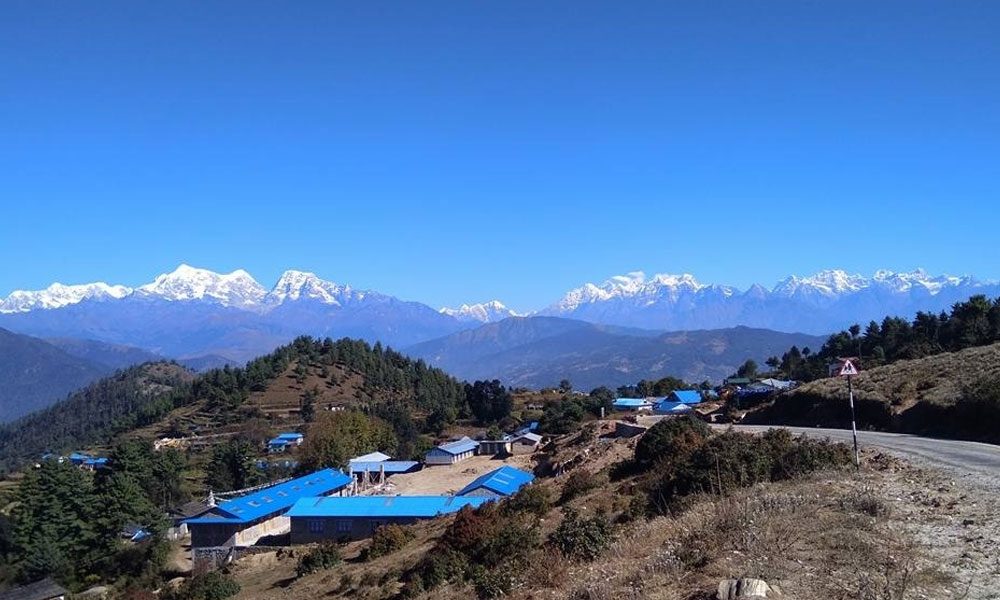
Solukhumbu area is known for its extra charges. And if you are searching for luxury in this area, be prepared because your trip is not going to be cheap. Extra charges are included for charging your electronics while taking hot showers.
If you need to charge your electronics, you have to pay some extra charges of USD 3 to USD 5 to tea houses and lodges along the way. And if you are looking to avoid paying extra for charging your electronics, carry a power bank with you.
In basic tea house and lodging services, hot water for showers is not included. Tea houses charge an extra USD 3 to USD 5 in lower regions and USD 5 to USD 10 in upper regions for hot shower facilities.
How do you minimize your costs?
As mentioned earlier, your expenditure on this trek depends entirely on you. You can choose a cheaper transportation facility and consider public transportation. Permits and insurance cannot be excluded or reduced. You can minimize luxury and adjust simple services. Do not reduce your expenses through food. You can boil your water instead of spending $10 a day on mineral water. Hiring cheaper porters and guides is also an option.
You might be able to minimize all the costs at once by buying a travel package that is much more affordable. Magical Summits also provides a package for a nine-day trek to Pikey Peak for just USD 775.
Conclusion
If you are looking for the best one-week adventure trek in Nepal, Pikey Peak is worth considering. You will have many unforgettable adventures, but this one will stand out the most. When you take in the breathtaking view of the Himalayas, including Mount Everest, no other feeling can compare to that.

